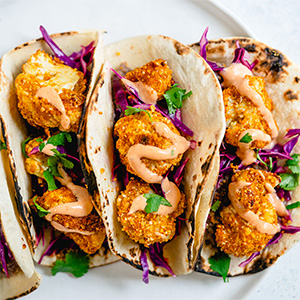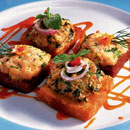Taking their beloved recipes to the grave
Published in All About Wine
MINNEAPOLIS -- Isabella Carlson’s potato rolls are the stuff of legend.
Each holiday season, her four children and 12 grandchildren savor the fluffy rolls, which bake together in a pan and come out the size of baseballs. Hot from the oven. Slathered in butter. Tasting them now, “it’s like you’re coming home,” said Kim Hedlund, of Wadena, one of Carlson’s daughters.
No one knows the origin of the recipe; it could have been a clipping from Good Housekeeping. But to the people who knew the feisty and funny Carlson, these were “mom’s rolls,” simple as that.
The rolls are so closely linked to this family matriarch and church camp cook that her daughters put the recipe on Carlson’s headstone when she died in 2016.
In a cemetery in Ponto Lake, Minnesota, about 30 miles southeast of Walker, anyone can walk up to the stone flanked by two hummingbird figurines — Carlson’s favorite bird — and leave with the instructions to take one family’s tradition and make it their own.
Headstones are getting more personal as families seek to memorialize their loved ones with unique details from their lives. “Beloved,” “loving” and “devoted”; “sister,” “father” and “wife” — those words describe only a small part of a person’s contributions to society, their interests, or the way they held a family together. Clip-art-style images — flowers, bears, religious symbols — only meet the needs of some mourners. But as people add more to the headstones of their family members, the business of making them is changing.
“It has become a different business than it was when I got into it. There’s way more personalization,” said Julia Gustafson, who hand-etches details onto headstones at Two Rivers Monuments in Elk River. Gustafson, known as “the Headstone Lady,” meets with customers under a banner that reads, “What do you really want on your tombstone?” She interviews them to identify what was important to them or to their loved one, and comes up with a plan to depict those sentiments on the memorial.
“I tell people, ‘This is your story. We’re not all going to be written about in history books, but we can write your story in stone,’” Gustafson said.
For many people, a life story will inevitably reveal a favorite food. A few headstones in Minnesota cemeteries have quite literally taken a signature recipe to the grave, with etchings that preserve mom’s cookies, an uncle’s barbecue sauce or a grandmother’s apple pie. On one of her favorite food-related headstones, Gustafson etched a woman’s handwritten recipe for cottage cheese bread, index card and all.
Cooking and eating beloved dishes can be a visceral way to stir up memories of a loved one. Tastes and scents of a favorite dish can bring people right back to childhood, or to a recurring holiday meal.
“It’s the best recipes, the signature dish that everyone brings to the community potluck or always to the family’s feasting. The ones everyone’s been waiting their whole lifetime to make,” said Candi L. Cann, a professor of religion at Baylor University and author of the book “Dying to Eat.”
Cann has noticed gravestone recipes at cemeteries near her in Texas — and she’s not surprised. The tradition of honoring the deceased through food is ancient, from Roman times to Dia de los Muertos celebrations in Mexico to the Protestant communal repast.
“That lunch after the funeral is a place that allows for people to sit around and talk about the dead and kind of put them in the past, and so in that way, it functions as an opening for memory and a way in which you can tell stories,” Cann said.
Archivist Rosie Grant knows of at least four Minnesota headstones with recipes, and there are more in the works. It’s one of the highest concentrations in any state, she said. She’s found 45 of them worldwide, mostly in North America. Grant is writing a cookbook featuring headstone recipes, “To Die For,” which will be released in the fall of 2025. (Disclosure: The book will feature a recipe from this reporter’s mother.)
The researcher became interested in the subject when she was a library science graduate student and interned at a cemetery to study its archive system. She found out about a recipe that was carved on a headstone and decided to attempt it in the kitchen. Now she travels to cemeteries whenever she learns of a recipe that’s been set in stone, and brings her homemade version of the dish to the site, documenting the visits on social media.
In Ponto Lake, Carlson’s potato roll recipe is etched onto the back of a shiny black granite headstone. If you didn’t know it was there, it would be easy to miss. Last week, Grant was lying on her back in a fresh blanket of snow while trying to take a picture of the recipe without capturing her reflection. In front of the stone, she placed the plastic bag of frozen homemade potato rolls she brought with her from California.
“The art of taking pictures of graves,” Grant lamented, chuckling as she wiped away snow.
Cemeteries, Grant said, “are an archive of a community.”
She finds many of the recipes from another kind of community: Facebook groups that draw other “cemetery enthusiasts.” It’s how she connected with Gustafson — it’s a small world among cemetery fans — and the two met in her shop on Grant’s latest Minnesota sojourn.
Grant also meets with and interviews family members when she can track them down. Over breakfast in a Pine River, Minn., cafe, she held up her bag of potato rolls, showing them to Isabella Carlson’s two daughters, who beamed upon seeing it.
“They’re really delicious,” Grant said.
For Carlson’s descendants, “mother, grandmother, sister and friend” was essential information to put on Carlson’s memorial, but it wasn’t enough.
Carlson went by “Ise” or “Grandma” to her family and the thousands of campers who ate her food in the dining hall at Spirit in the Pines camp in Hackensack. She was a cosmetologist. She deeply loved Elvis. She always had an art project at the ready for her grandkids. And cooking for her family meant the world to her.
The decision to share her recipe on her headstone came easily, her daughters said. Now, anyone can get a taste of what it was like to know, and be nourished by, Ise.
“It’s who she is and what she represented,” said Carlson’s daughter Tammy Frericks, of Albany, Minn.
“It just warms your heart to know she’s still shining.”
Easy Potato Rolls
Makes 45.
In Loving Memory: Mother, Grandmother, Friend.
--2 pkg. (¼ oz. each) active dry yeast
--1 ½ c. warm water (110 to 115 degrees), divided
--⅔ c. sugar
--⅔ c. shortening
--2 eggs
--1 c. mashed potatoes (*she used Yukon potatoes)
--2 ½ tsp. salt
--6 to 6 ½ c. all-purpose flour
Directions
In a small bowl, dissolve yeast in ⅔ cup warm water. In a large bowl, cream sugar and shortening until light and fluffy. Add the eggs, potatoes, salt, yeast mixture, remaining water and 2 cups flour. Beat until smooth.
Add enough remaining flour to form a soft dough ball. Shape into a ball; do not knead. Place in a greased bowl, turning once to grease top. Cover and let rise in a warm place until doubled, about 1 hour.
Punch dough down and then divide into thirds. Shape each portion into 15 balls and arrange in three greased 9-inch round baking pans. Cover and let rise until doubled, about 30 minutes. Bake at 375 degrees for 20 to 25 minutes or until golden brown. Remove from the pans to cool on a wire rack.
©2025 The Minnesota Star Tribune. Visit at startribune.com. Distributed by Tribune Content Agency, LLC.















Comments